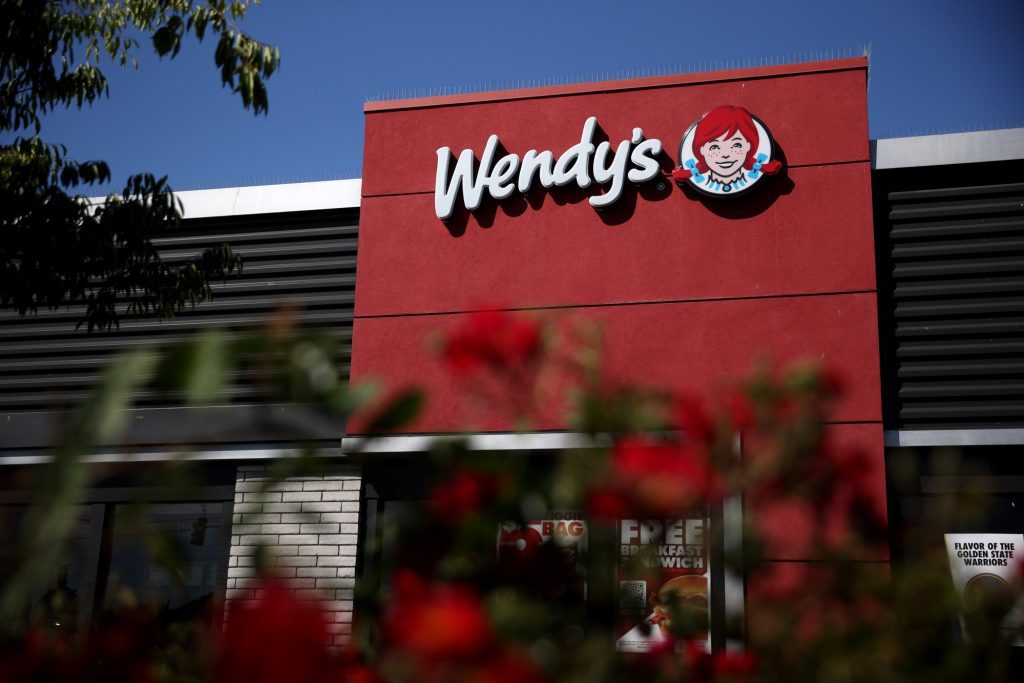By Anna Helhoski | NerdWallet
When people found out that the burger chain Wendy’s would start increasing prices in 2025, there was a quick strong negative reaction. This led to a lot of media coverage, upset customers, jokes on late-night TV, and a lot of spicy memes.
It seemed like the fast food chain’s supposed evil plans were stopped right away. That is, they might have been if increasing prices for your Frosty and fries was really what Wendy’s was planning to do. Wendy’s quickly explained that it wasn’t actually increasing prices, but using “dynamic pricing.” This is an important difference, but it is still business jargon that most people do not understand.
“I think they didn’t think through how people would interpret that phrase,” says Robert Shumsky, a professor of operations management at Dartmouth University’s Tuck School of Business.
Here’s the difference: Surge pricing uses real-time supply and demand data to raise — and only raise — prices. If you’ve ever tried to get a rideshare during rush hour, you’ve experienced how surge pricing hikes up the cost of your fare. Dynamic pricing, on the other hand, uses real-time supply and demand data to fluctuate prices up or down.
Instead of raising prices when there is high customer demand, as the public assumed, Wendy’s says it plans to use artificial intelligence algorithms to lower prices during slow times, according to a statement from Wendy’s to NerdWallet on Feb. 27.
All of this is to say that what Wendy’s is doing is not all that new. Consumers are already paying for goods and services set by dynamic pricing in lots of industries — including food and hospitality.
However, technology is making it much easier to change prices in real-time using an algorithm. And the availability of that resource has its appeal to businesses that hadn’t previously been able to price based on real-time factors.
On the surface, the most puzzling piece of the reaction to Wendy’s is that its competitors — McDonald’s and Burger King — already do dynamic pricing. They, along with Starbucks, offer promotions during slow parts of the day and offer perks (and even lower prices) for ordering via apps.
The lesson of Wendy’s is that just because businesses can do that, it doesn’t mean customers will like it — especially if they’re more aware that it’s happening.
“I think the big question now is whether there’s a change in consumer acceptance, over time,” says Shumsky. “When it’s rolled out in an industry, either it’s going to be rejected or it’s kind of become the norm, right? It became the norm in some industries, but as you saw from the reaction to Wendy’s, sometimes that doesn’t work very well.”
Dynamic pricing is all around you
Anyone who has ever booked an airline ticket or a hotel room has already paid an amount set by dynamic pricing. These industries were, and still are, the dominant space for the model.
But those prices are primarily set based on seasonal factors. For example, more people travel in the summer months, so airline tickets are more expensive in the summer. Gas prices go up on holiday weekends when more people will be on the road. Electricity is more expensive when it’s hot out because more people are using air conditioning. Ski lift operators can lower prices when conditions are subpar.
Other factors affecting pricing include how long you wait to book a plane ticket, as prices tend to go up the longer you wait. Hotels and Airbnbs are usually more expensive on weekends. Amusement parks like Disney World and Disneyland determine prices based on historical data, such as wait times at the Jungle Cruise during busy months.
However, the algorithms used in dynamic pricing are now more advanced, and AI can analyze a larger amount of data than before. Data can now be gathered about the present weather rather than what's typical for a season. Algorithms can also consider the number of customers in real time instead of relying solely on long-standing consumer patterns.
E-commerce has been utilizing this method for a while. Amazon, for instance, adjusts prices based on real-time data about consumer behavior, supply, demand, and competitor prices. The analysis of all this data enables quick price changes.
An example of dynamic pricing that people often encounter is when ordering food through delivery apps. Restaurants can alter the prices shown on apps like DoorDash or Seamless at any time. The same goes for grocery delivery. Prices are typically higher on a third-party delivery service compared to in the restaurant or store due to the fees the apps charge, as well as other supply-and-demand factors.
How technology allows for even more dynamic pricing
More sophisticated algorithms make it easier and more efficient to implement dynamic pricing. As a result, businesses using AI-enabled dynamic pricing may have a better understanding of what they should charge at any given time. However, on the flip side, it also means consumers may have less accurate expectations about the prices they will be charged.
Restaurants, for example, have always had happy hours and other common, mostly small, price changes, according to Zach Brown, assistant professor of economics at the University of Michigan. Unexpected price changes are relatively new for restaurants, and consumers might be annoyed and confused to find the cost of an item higher than expected. Brown uses the example of a restaurant that implements dynamic pricing for a $10 item and sometimes charges $8 and other times charges $12 depending on demand.
Digital menus have made price changes even easier. Consider QR-coded menus that were widely adopted for sanitary reasons during the pandemic — many restaurants are keeping those around because it’s much easier to change a menu online than to print a new one. Those digital menu boards that Wendy’s plans to introduce next year are what enable its dynamic pricing implementation.
“I think the issue historically has been that technology was just not available,” says Brown. “You can program software to do it for you so you don’t even need a manager thinking about what prices to set.”
Making price changes digitally instead of manually has been embraced by major chain retailers as well. Stores like Kroger and retail giant Walmart have introduced electronic shelf labels that allow for quicker price adjustments.
"At grocery stores they used to manually stick tags on items," Shumsky explains. "Now they can electronically change them, making price adjustments easier to implement in real time. There are also improved algorithms behind the scenes to monitor demand and supply and adjust prices immediately."
According to Brown, prices may end up lower for some people and higher for others. "It creates winners and losers," he says. "Typically, it benefits savvy consumers who check prices online and take advantage of lower prices."
The data gathering and analysis by AI doesn't stop at setting prices. According to Shumsky, the technology can also directly influence shopping habits and promote cross-selling. E-commerce brands commonly use algorithms to offer targeted advertisements and sales, and brick-and-mortar retail is trying to catch up. The same AI tech used for dynamic pricing can guide customers toward products and deals.
For instance, the Kroger shopping app's "Store Mode" provides personalized recommendations and helps customers find items they're looking for. Wendy's also says AI technology can suggest products based on factors like the weather; for example, suggesting a cool Frosty on a warm summer day.
Brown expresses concern that AI-driven algorithms are becoming better at optimizing outcomes. "We need more transparency about what these algorithms are doing," he says. "Some pricing algorithms could be harmless and even benefit consumers in some cases, while others may not."
How do AI-driven algorithms function in dynamic pricing?
Ashwin Kamlani, co-founder and CEO of Juicer, an AI-driven dynamic pricing company, explains that AI simplifies the process of analyzing large amounts of data, but much of the output is experimental. "We are striving to enhance the efficiency and intelligence of forecasting and analysis results," he says.
Kamlani illustrates that AI can identify patterns using historical data in a gradual and specific manner. "You need to look for repeatable patterns, such as the consistency in product orders over time, in order to predict sales with a certain degree of confidence," he explains.
AI can be used to analyze more than just chicken wing sales on their own. It employs machine learning to identify external factors that may have affected sales. Kamlani states, "Our solution predicted sales based on factors such as upcoming events and weather, and we continuously strive to improve the accuracy of our forecasts by analyzing any discrepancies from past predictions."
Looking at competitors is expected to have a bigger impact on deciding what prices to set and when and where to set them.
What is the future of changing prices based on demand?
Businesses must overcome a basic obstacle, according to Shumsky: consumer expectations.
“From a consumer perspective, having consistent prices has great benefits: You want to know the cost of something in advance,” states Shumsky. “And if prices are fluctuating, it can be very frustrating.”
Experts suggest that most sellers are likely to adopt changing prices without much negative effect — it’s what buyers have come to anticipate. “For everything that’s going to be bought online, I think changing prices is a real possibility in the future,” mentions Brown.
Even though changing prices can be implemented more easily in various industries than before, that doesn’t mean it will happen. If consumers are not accustomed to fast price changes, they may reject it.
Ticketmaster, the event ticketing giant known for using changing prices, faced criticism from the Department of Justice for its sudden price increases in recent years, such as spiking Taylor Swift and Bruce Springsteen concert tickets to thousands of dollars for premium seats. Artists like Swift and Springsteen, as well as Harry Styles, Paul McCartney, Coldplay, and others, have the choice to deactivate changing prices for their concerts, but they often decide not to do so.
When AMC, a movie theater chain, attempted to introduce its own version of Ticketmaster’s changing price model last year, consumers quickly and openly rejected it.
Nonetheless, customer dissatisfaction may not be very effective if there is still a demand. Price surges for rideshare services like Uber and Lyft have long been criticized by users during peak times even though, as pointed out by Shumsky, higher fares increase the earnings of drivers, which often leads to more drivers coming out and ultimately reduces prices. But let’s be honest, no one likes price surges.
Last summer, Lyft CEO David Risher supposedly stated during an investment call that the company intended to end its policy of surging prices because “riders hate it with a fiery passion,” but in the fall, Risher changed his stance.
Despite Wendy’s denial of using “surge pricing” and its disavowal of implementing it, the damage was done. Cost-conscious consumers, already feeling the impact of rising costs over the past two years, were not happy. inflationary cost increases over the past two years, were not pleased.
Now the burger chain is offering what seems to be an apology in the form of $1 burgers until April 10 (allegedly for March Madness, but the promotion looks a lot like a public relations maneuver). However, despite the backlash against its dynamic pricing plans, Wendy’s has not indicated any intention to reverse course: By 2025, you can anticipate fluctuations in prices appearing on digital screens at certain Wendy’s locations.
Other fast food chains may follow suit, but Brown expresses curiosity about how widespread dynamic pricing will become in the restaurant industry in general.
Brown believes that some people are frustrated by constantly changing prices and prefer the certainty of a printed menu at a restaurant. He thinks it will take some time before upscale restaurants start using dynamic pricing, as there's something questionable about it. However, he acknowledges that norms may change in the future.
Customers at fancy restaurants are used to paying market price for certain seafood, but they might hesitate to do the same for a simple dish like roast chicken.
Shumsky suggests that many service providers are unlikely to implement dynamic pricing models. According to Shumsky, changing prices can violate the implicit trust between service providers and consumers, particularly in fields such as massage therapy and healthcare, where maintaining a client relationship is crucial.
Shumsky emphasizes that there are certain standards that won't be compromised. While he acknowledges that dynamic pricing hasn't reached its limit, he doesn't expect it to be adopted everywhere.
How consumers can benefit from dynamic pricing
Dynamic pricing can be bothersome for consumers, but it also presents opportunities for those willing to invest time and attention into it.
Loyalty programs, often accessed through apps, are offered by grocery stores and fast food chains as a convenient way for consumers to monitor price changes. These programs typically provide perks such as points for free items and small discounts for app-based purchases. airlines, hotels and fast food chains are a convenient way to keep track of price fluctuations. And, as mentioned before, those programs usually offer perks like points toward free items and small discounts for using the app to make purchases.
Consumers can also anticipate slower periods during the day or week when companies may offer discounts, as well as predict times of high demand and avoid making purchases during those times.
Dynamic pricing depends on timing to be effective, so if consumers strike at the right time, they can benefit from the system.
More From NerdWallet
The article Wendy’s Isn’t the First: Dynamic Pricing Is Everywhere originally appeared on NerdWallet.









